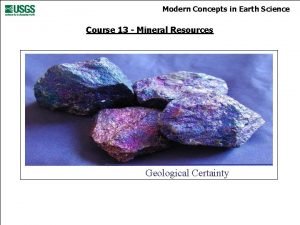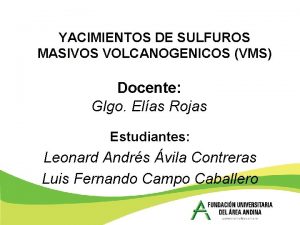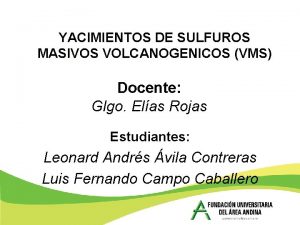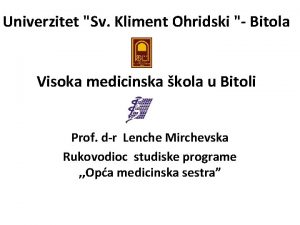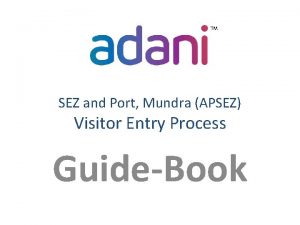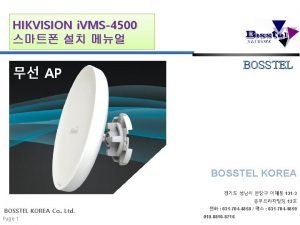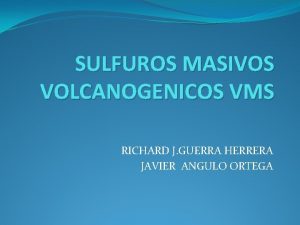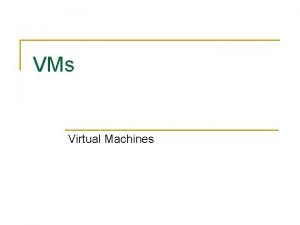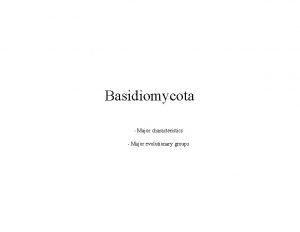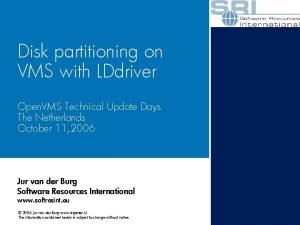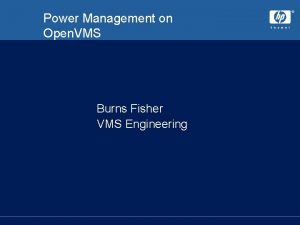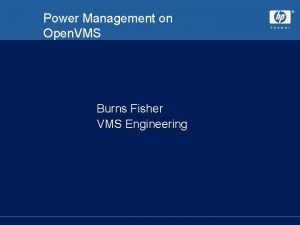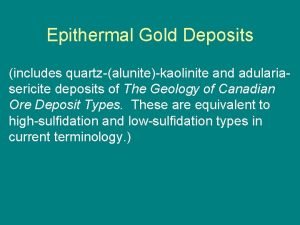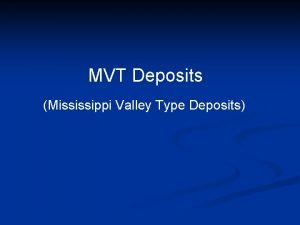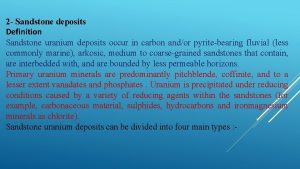Characteristics of VMS Deposits VMS deposits are major












- Slides: 12

Characteristics of VMS Deposits • VMS deposits are major sources of Cu and Zn and significant quantities of Au, Ag, Pb, Se, Cd, Bi, Sn as well as minor amounts of other metals. • VMS occur in lens-like or tabular bodies parallel to the volcanic stratigraphy or bedding. • the predominant hosts are volcanic rocks and fine-grained, clay-rich sediments. • Iron sulfide (pyrite, pyrrhotite) with chalcopyrite, sphalerite, and galena are the principal economic minerals.

Mineral and Metal Zoning • Cu is usually high relative to Zn + Pb in the core of the pipe and in the spine of the massive sulfides. The ratio of Zn + Pb to Cu increases around the outside of the pipe and towards the upper part and margins of the massive zone. Au and Ag usually are highest in the fringe areas. Barite also tends to occur at fringes.

Pyrite, sphalerite, galena




2. Vein Deposits • Convergent margins are good regions to develop vein deposits. Igneous intrusions and metamorphism provide fluids which can penetrate into the overlying deformed sedimentary rocks. • As hot (hydrothermal) fluids rise towards the surface from cooling intrusive rocks through fractures, faults, brecciated rocks, porous layers and other channels they cool or react chemically with the country rock.


Conjugate vein sets,

Golden Mile, Australia

3. Porphyry Copper Deposits • Definition: large, relatively low grade, intrusionrelated deposits. in granitic intrusive rocks that are porphyritic in texture. • The major products are Cu and Mo or Cu and Au. • The country rock alteration is distinctive and changes as you approach mineralization. • Where sulfide mineralization occurs, surface weathering often produces rusty-stained bleached zones (Gossan).

Simple porphyry system

